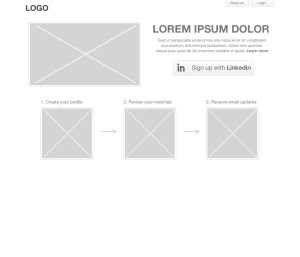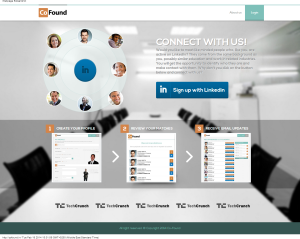I get many questions from prospect clients about our web development process. Therefore, I decided to write a blog post about the 8 pillars we use for building complex web applications. Here is how we approach our projects, after a proposal has been approved:
- Defining Technical Requirements: We will start by creating a document that outlines the exact features of the software. It’s basically a 5-10 pages document that lists every little aspect of the software. This is very important because we want to both agree on what we’re building. The devil is in the details, and this is where we kick him out. 🙂
- Creating wireframes: After we have agreed on the exact technical requirements, we will create a visual mockup of the layout of every custom page of our application. Pages which include a generic functionality or are using existing plugins will be excluded since they’re already defined. No design is present at this stage, only wireframes. Below is a sample wireframe for one of our past projects.

- Design Phase: After wireframes have been designed, we will apply colors to them, and keep on modifying them till the client is satisfied with the final designs. At this stage, we have defined how our web application will look, but without any functionality yet. Below is a finalized design, based on the previous wireframe

- Development Phase: This usually takes a few weeks to a few months, depending on the project size. This is where we breathe life into your designs, by transforming them into beautiful code.
- Internal Testing Phase: After development has been done, one of our certified quality assurance testers will conduct an internal testing to ensure that your web application contains no bugs. The tester will work closely with our developers in order to fix any issues that the developers didn’t catch.
- Client Testing Phase: At this stage, clients get access to the application so they could do the testing themselves, and see that everything is functioning as expected.
- Beta Testing Phase: Beta testing consists of giving access to a few users of the web application, in order to test the application in a real life situation. Any issues that arise during this phase are fixed prior to launch.
- Application Launch: Alright, Sparky! We’ve reached this state, and we’re set to go. During this phase, we have an extensive checklist of things that we execute in order to make sure your application is working properly.
As you can see, building complex web applications is an art and a science which provides a great deal of satisfaction for those who know what they’re doing. Keep that in mind while building your next project!
Questions? Comments? Potential Project? Get in touch, we would love to hear from you!
